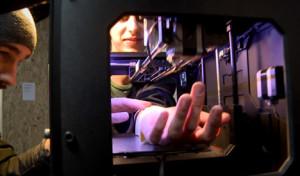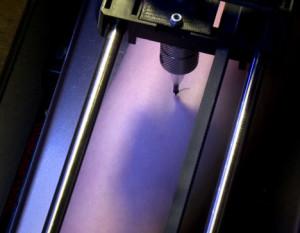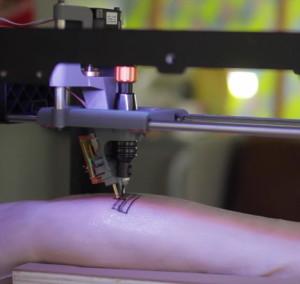 I got my first tattoo when I was 19. I did it on a whim, picked the design off the wall, and was so freaked out that I shook and the poor tattoo artist had to warn me that if I couldn’t be more still, my design might come out a bit, well, different than I had hoped. Luckily, it came out great, and I discovered that I loved tattoos, and I got more, including a design that I added onto my original tattoo to make it more personalized. I believe that tattoos should commemorate important life events and experiences, and I’ve always associated mine with travel, as I got my first in Toronto and my second in Dublin. For a while I wanted to get a “travel tattoo” any time I went to a new place, but that soon would have left me too broke to travel anywhere ever again.
I got my first tattoo when I was 19. I did it on a whim, picked the design off the wall, and was so freaked out that I shook and the poor tattoo artist had to warn me that if I couldn’t be more still, my design might come out a bit, well, different than I had hoped. Luckily, it came out great, and I discovered that I loved tattoos, and I got more, including a design that I added onto my original tattoo to make it more personalized. I believe that tattoos should commemorate important life events and experiences, and I’ve always associated mine with travel, as I got my first in Toronto and my second in Dublin. For a while I wanted to get a “travel tattoo” any time I went to a new place, but that soon would have left me too broke to travel anywhere ever again.
I’m thinking now, though, that I might have to make a trip to France specifically to visit Appropriate Audiences, a French tattoo studio that figured out how to turn a 3D printer into a tattooing machine. The idea, which was conceived during a workshop organized by the French Ministry of Culture and held at the École Nationale Supérieure de Création Industrielle, seems simple but brilliant. Pierre Emm, Piotr Widelka and Johan Da Silveira, who would later become the founders of Appropriate Audiences, removed the extruder from a MakerBot, replaced it with a tattooing needle, and tatoué was born.
The machine was tested on silicone, and worked like a charm. A simple circle design was uploaded using Autodesk software, and the machine replicated it perfectly. The next step was then to test the machine on a real person. It was a bit of a challenge, the designers said, to work with the curved surface of a human arm, but they were able to tighten and flatten the skin using, of all things, an inner tube taken from a scooter.
We first covered tatoué in 2014, when Appropriate Audiences began using it to tattoo simple designs. Enthusiasm for the invention has been so strong that the designers are now devoting their full-time efforts to improving their machine. They have added a sensor that can read the surface of the user’s skin and adapt to the dimension of the limb and changes in skin texture, enabling a more precise tattoo. Right now, the machine is only capable of tattooing on the arm, which can be inserted into the machine, and the designers say that adapting the machine to tattoo anywhere on the body is their next goal.
“Making the machine more accessible is a challenge,” the studio said. “And there are many possible future applications – in medicine or in fashion – but our priority is a third version of the machine, which will be able to tattoo any part of the body using a specific architecture. We are currently working on this.”
In the meantime, I’m already planning what I’m going to get inked on me next, as soon as I can travel to France.
You can follow the adventures of the 3D printing machine on Twitter and on Instagram. Check out tatoué in action below:
Subscribe to Our Email Newsletter
Stay up-to-date on all the latest news from the 3D printing industry and receive information and offers from third party vendors.
You May Also Like
IperionX Inks 10-Year Deal with Wisconsin Manufacturer for 80 Metric Tons of Titanium Per Year
IperionX, the Charlotte-based supplier of sustainable titanium powders used for additive manufacturing (AM) and metal injection molding (MIM), has signed a ten-year deal with United Stars, a group of industrial...
Gastronology Launches Industrial Production of 3D Printed Food for Dysphagia Patients
Food 3D printing has, in many ways, been an additive manufacturing (AM) segment looking for the right business case. While some applications are beautiful and others may or may not...
Lockheed Martin Leads $3M Investment in Q5D’s Electronics 3D Printing System
Q5D, an original equipment manufacturer (OEM) of robotic arm, hybrid additive manufacturing (AM) systems used for wire harness production, has closed a $3 million investment round. The investment arm of...
3D Printing News Briefs, April 6, 2024: Depowdering, Cybertruck Door Handles, & More
In today’s 3D Printing News Briefs, ioTech’s digital manufacturing CLAD technology is opening up opportunities for microelectronics and additive manufacturing. Hexagon and Raytheon Technologies commercially released the Simufact Additive Process...


































